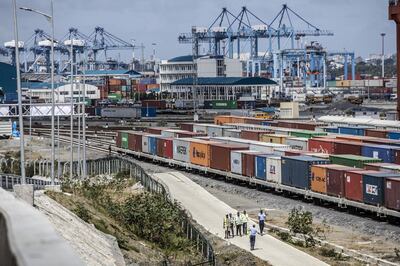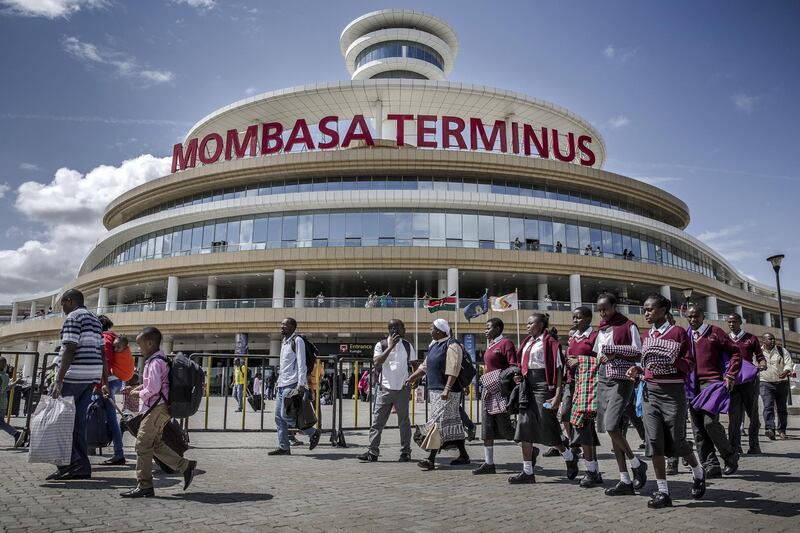African states owe a growing mound of debt to Chinese lenders, opening up a debate over whether these countries are entering into a debt trap – or getting a historically good deal.
Cumulative loans to Africa from Chinese sources since 2000 had amounted to $124 billion by 2016, according to figures compiled by the China-Africa Research Initiative (Cari) at Johns Hopkins University School of Advanced International Studies in the United States.
In September this year, Chinese premier Xi Jinping added another $60bn pledge at the Forum for China Africa Cooperation held in Johannesburg. Not everyone is happy with the rate at which the debt mountain that leads back to Beijing is growing.
“Chinese loans are viewed as being without strings attached, but they will have to be paid back,” says Lisa Thompson, of the African Centre for Citizenship at the University of the Western Cape. It is not always clear whether the recipient nation needs, or can afford, the bankrolled projects, such as the recently completed $4bn Ethiopia railway, the cost of which amounted to a quarter of the country’s annual budget.
“This kind of aid is seen as rolling over and having your tummy tickled, with no concern of conditions attached,” says Ms Thompson. In time however, Beijing may come calling in the favours, such as African nations being obliged to support China at the UN, she adds.
Some beneficiaries of Chinese debt have already paid a heavier price.
Critics point to the fate of Sri Lanka, which borrowed heavily from China to build the seaport of Hambantota. The port struggled to attract ships, and last December Sri Lankan president Maithripala Sirisena handed over control of the port and 15,000 acres around it to Beijing on a 99-year lease.
Yet, economic links between China and Africa are less important than some of the headline figures might suggest, according to John Ashbourne, senior emerging markets economist at Capital Economics in London.
“Beijing plays a less dominant role than some seem to think,” he says. For instance in Kenya, which just completed its own Chinese-financed railway linking Mombasa Port to the capital Nairobi and built and operated by China Communications Construction Co, Chinese loans contributed less to the recent rise of the country’s debt load than domestic lenders and commercial banks from other countries.

In total, Kenya owes a third less to China than it does to multilaterals like the IMF. “So, while Chinese loans may boost Beijing’s political clout in Africa, it will be years before it matches the influence of western donors.”
Mr Ashbourne notes the EU excluding the UK is still Sub-Saharan Africa’s biggest trading partner, with a bilateral flow of goods worth $120bn in 2017. China, meanwhile, sold $100bn worth of goods to Africa in the same period, about the same value of its exports to Vietnam.
He adds that there are, admittedly, concerns about the economic viability of some Chinese-backed investments. “But such problems are hardly unique to Chinese-funded projects; the European-backed Lake Turkana wind project [in Kenya], for example, is over budget and over a year behind schedule.”
_______________
Read more:
A workforce boom makes SMEs more important than ever in Africa
Sukuk issuance to grow in Africa as Islamic debt demand rises
_______________
An unexpected benefit of China’s lending splurge may be that it stirs competition from traditional African backers in the West.
In August UK Prime Minister Theresa May paid a visit to South Africa and pledged £4bn (Dh19.32bn) investment in African economies. Mrs May said Britain would embark on a high-quality investment and job creation, and take the lead in African investment.
“It is why I want the UK to be the G7’s number one investor in Africa by 2022, with our companies investing billions into African economies,” she said in a speech in Cape Town.
The US is also stepping up its game. In October the Senate passed a bill that will create a $60bn agency to invest in developing countries. In a rare show of bipartisanship, both Democrats and Republicans voted for the agency, which is viewed as a necessary counterweight to China’s growing financial influence in Africa.
US President Donald Trump is expected to sign into law the Build Act, as it is called, before the end of October. This is a sharp departure from Mr Trump’s previously stated misgivings over the US Overseas Private Investment Corporation, which makes loans to businesses in the developing world.
“There appears to be little pretence in Washington that the new $60b International Development Finance Corporation is anything other than a response to Chinese finance around the world,” says Eric Olander, a Shanghai-based based host of the China Africa Project podcast.
Mr Olander notes that many of the headlines appearing of late warning of African states becoming ensnared in Chinese debt omit that these countries are already servicing substantial and far more costly loans from western lenders.
“I don't understand why almost every international news story about Africa's spiralling debt focuses on Chinese lending when African countries pay three times in interest payments to private creditors,” he says.
“It seems like that piece of context would be critical to the overall story.”






